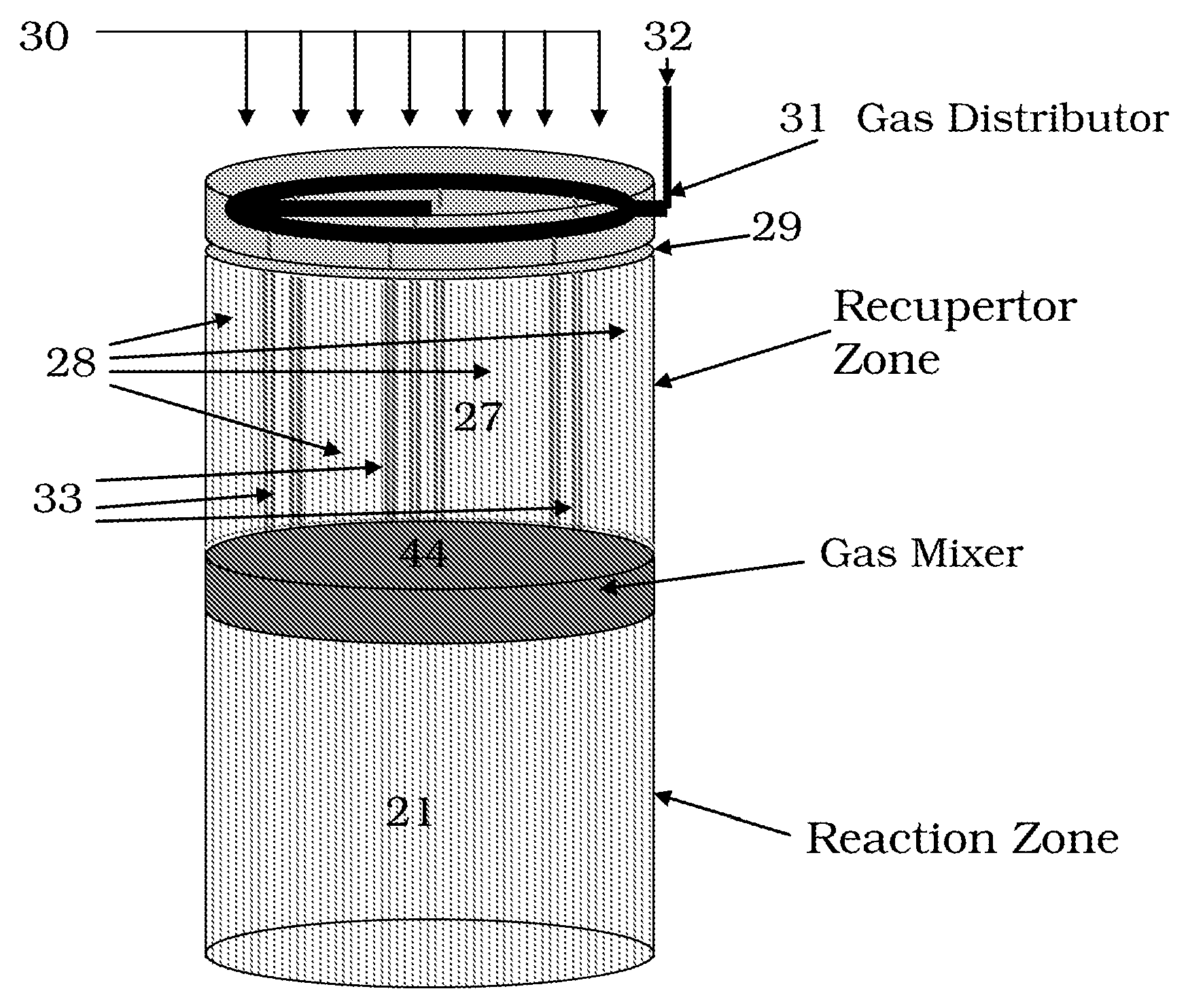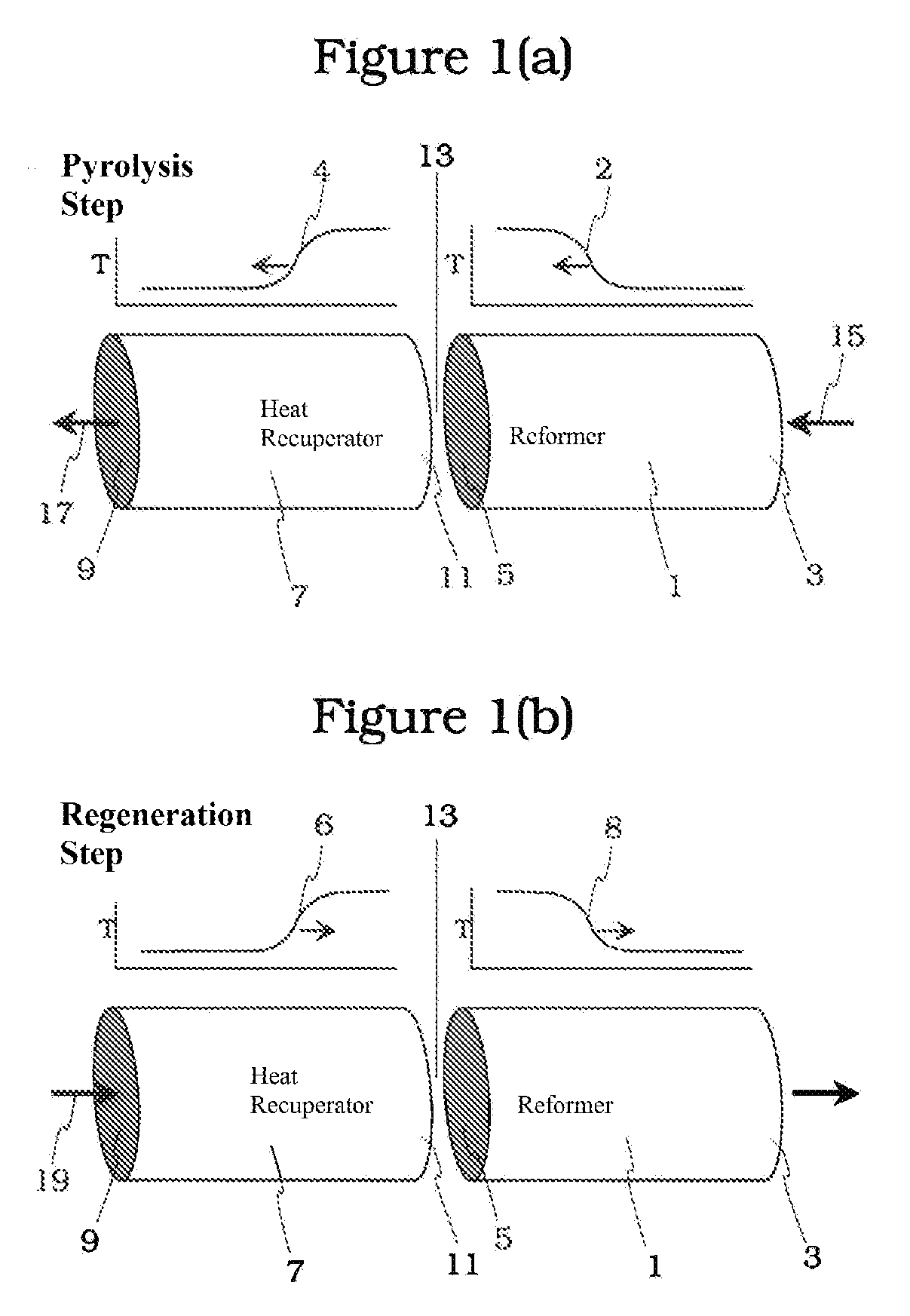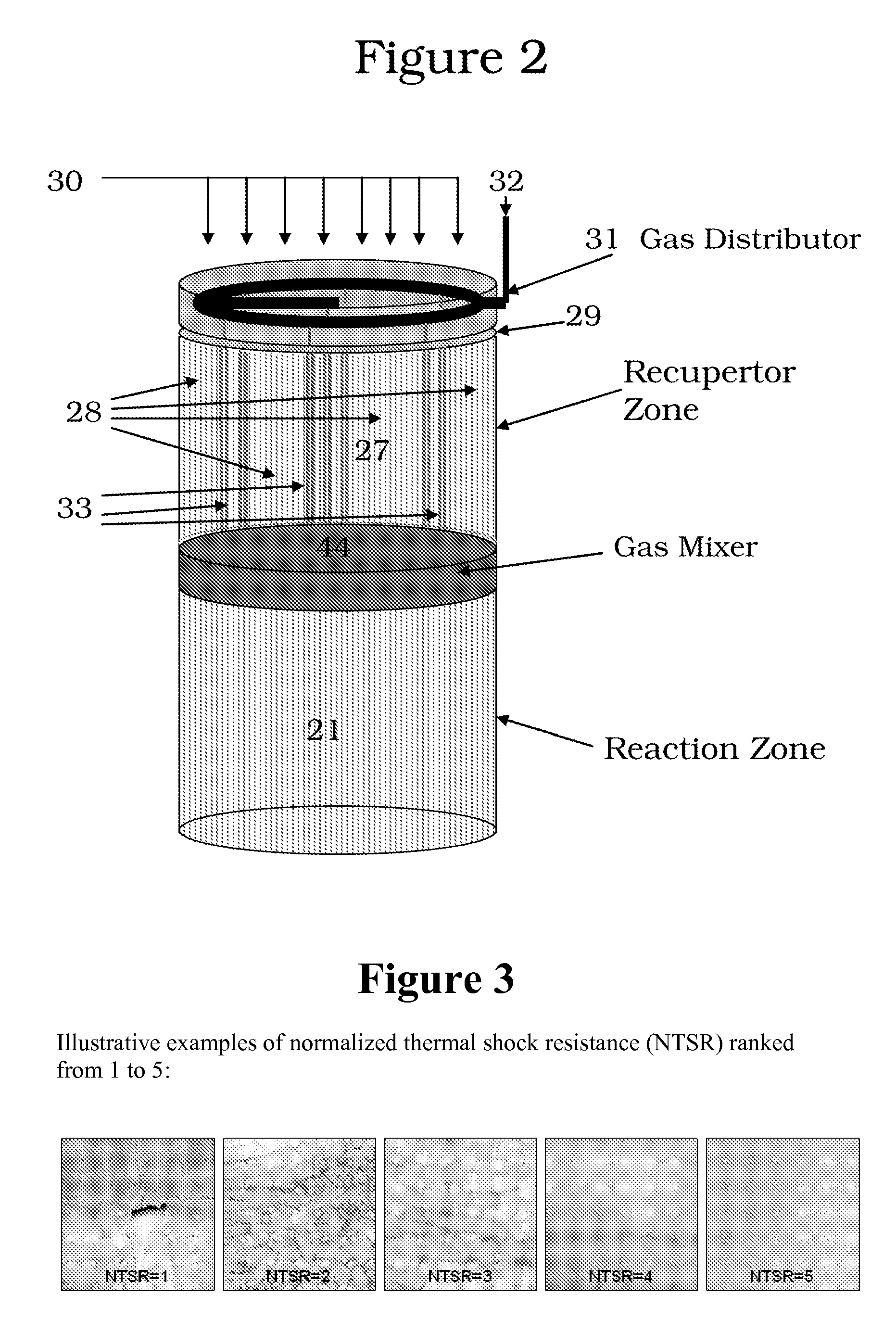Acetylene (or ethyne, HC≡CH) has long been recognized as one of the few compounds that can be made directly at
high selectivity from
methane pyrolysis but the conditions of that manufacture have placed it beyond commercial practicality for other than high cost,
specialty production.
One of the biggest impediments to producing
acetylene from
methane or other hydrocarbon feeds has been the very high temperatures required to produce high-yield conversion of
methane to
acetylene.
Pyrolyzing large quantities of methane into
acetylene for conversion to olefins had been considered too costly and impractical due to the special types and costs of equipment that would be required.
However the known processes are inefficient compared to commercial steam cracking, do not scale well, and are generally only useful for
specialty applications.
Such temperature and processes have largely been unattractive due to thermal, chemical, and mechanical degradation of the equipment utilized.
Virtually any
metal components directly exposed to such temperatures and stress due to cyclical temperature fluctuations, will be costly and unacceptably degrade over time.
Although regenerative pyrolysis reactors are generally known in the art as capable of converting or cracking hydrocarbons, they have not achieved commercial or widespread use, due at least in part to the fact that they have not been successfully scaled well to a commercially economical size or commercially useful
life span.
These drawbacks to wide scale commercialization are due in large part to the inability of the equipment to adequately control and contend with the very high temperatures.
A related challenge has been in controlling how fuel and oxidant are combined during the regeneration or heating stage of the process.
Inability to effectively control this issue contributes to the degradation of components and inefficiency at
commercial scale.
Due to uncontrolled
exothermic reaction, the created high temperatures are difficult to position and contain for extended periods of time and lead to premature equipment failure.
Another challenge relates to materials stability at high temperature.
Many prior art reactor materials undergo or become susceptible to
chemistry alterations at the high process temperatures.
The alterations lead to premature equipment degradation and potentially even interference with the
process chemistry.
Complicating the issue still further for regenerative or cyclic reverse flow reactors has been the detrimental effects upon materials that are exposed to the large, cyclic temperature swings encountered during the process.
Unfortunately, these economically favored feedstocks typically contain undesirable amounts of nonvolatile components and have heretofore been unacceptable as regenerative reactor feedstocks.
Regenerative pyrolysis reactors do not have the flexibility to process such otherwise economically crack favorable feedstocks because, although
coke can typically be burned off, deposits or buildup of ash and metals within the reactor cannot easily be burned or removed.
This publication indicates that the use of these furnaces permits substantial increases in the yield of olefins (i.e.,
ethylene, propylene, butadiene) while decreasing production of less-desirable co-products.
It is believed that all commercial acetylene plants operated on feeds of ethane,
naphtha, and / or
butane, but that none have successfully operated on methane feeds.
However, the lateral introduction also exposes the lateral injection nozzles or ports to the
combustion product, including the extremely high temperature needed to crack methane feeds.
Degradation in
nozzle performance, shape, and / or size consequently made it extremely difficult to control
flame shape, temperature, and efficiency.
Although some of the Wulff art disclose use of various
refractory materials, a commercially useful process for methane cracking was not achieved utilizing such materials.
Also, a further and more significant drawback of the Wulff process is that the laterally or separately introduced portion of exothermic reactant is not utilized for
quenching the recuperation reactor
bed.
This imbalance in heat created and heat removed typically results in an expanding heat gradient through the reactor
bed and corresponding changes in
reaction timing, duration, and control.
This situation creates significant difficulty with
quenching the reaction at precisely the right time to produce the desired acetylene or other
reaction product.
The aforementioned practical obstacles have impeded large scale implementation of the technologies.
Materials availability for such high temperature is one of the most critical issues in design and operation of large-scale, commercial, high-productivity, RFR's.
Even though
engineering grade ceramics have superior strength and
toughness at relatively low temperatures, they are relatively poor in
thermal shock resistance and many grades, such as but not limited to borides, carbides, and nitrides are not chemically stable at high temperature.
Many are also not suitable for use at the high temperatures encountered with some pyrolysis reactions.
However, insulation grade ceramics usually lack the structural strength and functional
toughness needed for the internal components of RFR's that are directly exposed to the pyrolysis reactions and flowing, hot reactants or products.
Also, the insulation properties of
porous ceramics may also tend to degrade over time as the relatively large pores may tend to fill with
coke accumulation.
However, while some refractory grade ceramics tend to be somewhat
inert or chemically stable at elevated temperatures, some refractory grade ceramics become chemically and / or structurally unstable at elevated temperatures, rendering them unsuitable for applications exposed to chemical reactions.
Such alterations can result in changes in bulk volume which can result in production of
stress fractures and / or cleavage planes which can reduce the material's strength.
However, the studied art does not teach preferred crystalline structure or composition for particular reactor furnace uses.
The reviewed art is also void of teaching how to prepare or select a material having a range of properties that are suitable for use in constructing a furnace for performing substantially continuous, cyclical, high temperature pyrolysis
chemistry.
Also,
materials testing methods commonly applied to metals and polymers are frequently less useful for testing ceramics.
The available tests provide only a limited picture of the total performance limits of any particular
ceramic.
These sparse, non-specific disclosures left the art largely incapable of providing a large-scale, commercially useful reactor or reactor process.
The teachings of the art was only effective for enabling relatively small scale
specialty applications that see vastly inferior use as compared to large scale processes such as hydrocarbon steam cracking.
Lack of materials availability and selection criteria for identifying the materials for use in the reactive and most severe temperature regions of a
reactor system is one of the most critical remaining issues in design and large-scale operation of such reactors.
 Login to View More
Login to View More  Login to View More
Login to View More 


